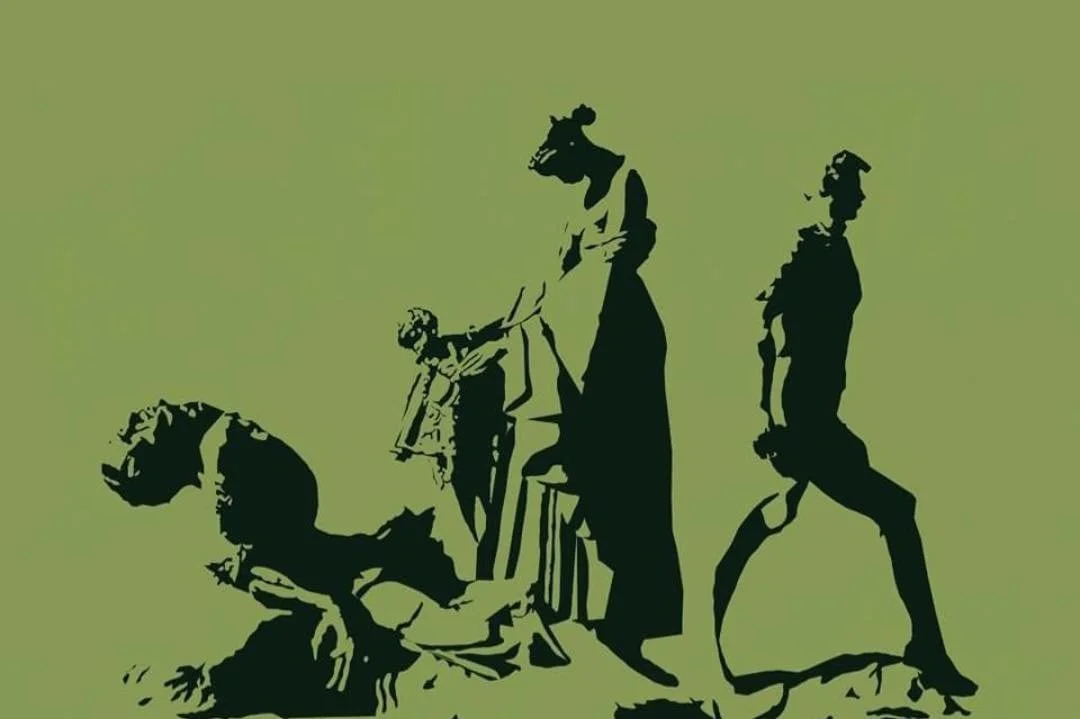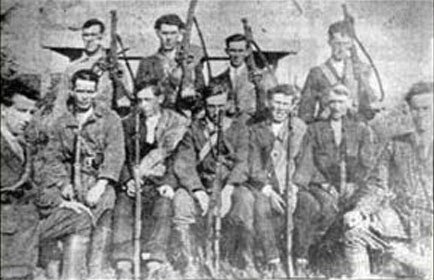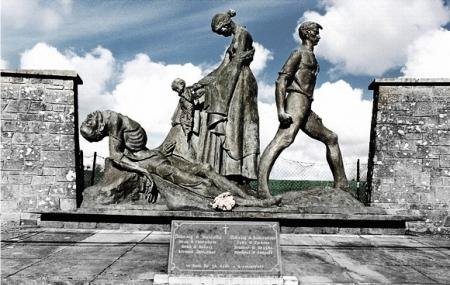100 Years On - Remembering The Brutality At Ballyseedy
Today (7th March) marks the 100th anniversary of the Ballyseedy Massacre - an outrage perpetrated by Free State counter-revolutionaries against those fighting in defence of the Republic. The massacre was one of the most brutal acts to take place during the Irish counter-revolutionary war of 1922-1923, an event that is routinely and less accurately referred to as the Irish Civil War.
In the early hours of 7th March 1923, nine Republican prisoners were taken from their cells by Free State counter-revolutionaries in Ballymullen Barracks in Tralee and marched to Ballyseedy Cross. It was here that the men were tied to a landmine that was then detonated. Nearly all the prisoners perished in the blast, with their bodies then raked with machine gun fire in the aftermath.
In nearby Tralee the counter-revolutionaries prepared nine coffins, one for each dead prisoner. Every coffin was filled with the badly mutilated remains of the men. Shortly afterwards the counter-revolutionaries released the names of these men to the press, these were Pat Buckley, John Daly, Pat Hartnett, Michael O’Connell, John O’Connor, George O’Shea, Tim Twomey, James Walsh and Stephen Fuller.
Miraculously however one man did survive. Stephen Fuller was blown to safety by the blast and was able to crawl to the safety of the nearby home of Michael and Hannah Curran, where he was cared for and nursed back to health. When he was well enough Fuller told his version of the events, contradicting official state accounts of the incident. Official accounts contended that the prisoners were in the process of clearing an obstruction when they accidentally triggered a mine that had been placed in the barricade by their Anti-Treatyite comrades.
This attempted cover-up was soon unravelled however as Fuller gave his version of events. Fuller claimed that rather than being ordered to clear a mined barricade that had been set up by Anti-Treatyites, the counter-revolutionaries instead intended to execute them as a reprisal for the five Free Staters killed the previous day in Knocknagoshel.
“We were all placed round a log of timber on the road and tied together with a big rope. Our hands were then tied together and our ankles, and another rope was tied around our knees. We were then told that we were to be blown to atoms as a reprisal for the death of the Free State officers killed in Castleisland (Knocknagoshel) the previous day.”
Kilflynn IRA Flying Column, 1922.Back (L to R): Denis O'Connell (Lixnaw), Stephen Fuller (Kilflynn), William Hartnett (Mountcoal), Tim Tuomey (Kilflynn). Front (L to R): Terry Brosnan (Lixnaw), John McElligott (Leam, Kilflynn), Danny O'Shea (Kilflynn), Timothy (Aero) Lyons (Garrynagore), Tim Sheehy (Lyre), Pete Sullivan (Ballyduff), Paddy Mahony (Ballyegan, Battalion O.C.)
There was a riot when the bodies were brought back to Tralee, where the enraged relatives of the deceased broke open the coffins in an effort to identify their dead.
Subsequent events made it very clear that far from being an accident or an isolated episode of depravity, this new tactic of execution by landmine was now local policy. The day after the Ballyseedy Massacre two attempts were made to recreate the atrocity, with one of these attempts coming unstuck at Castlemaine when the prisoners there escaped. Those forced on to Countess Bridge near Killarney were not so lucky. Just as happened at Ballyseedy Cross, the prisoners were tied together around a mine, with the resultant explosion claiming the lives of four out of the five men. Tadgh Coffey was the fortunate soul who escaped in this instance.
A similar outrage took place in the town of Cahirciveen on 12th March as counter-revolutionaries tied five Republican prisoners to a landmine and detonated it. The prisoners executed in this atrocity were shot in the legs beforehand to prevent any of them recreating the miraculous feat achieved by Fuller and Coffey days previously. Weeks later another five prisoners were be executed in Cahirciveen, this time by the bullet instead of the bomb.
It is alleged that in the aftermath of these executions counter-revolutionaries celebrated, boasting over the enemy lives they had taken, even going so far as to bring out a band and parade in the midst of the mourning relatives of those it had killed only hours earlier.
Memorial for the victims of the Ballyseedy Massacre
The basis for the Ballyseedy Massacre lay in the adoption of the Military Courts legislation on 27th September 1922. This legislation, dubbed ‘The Murder Bill’ by Republicans, gave official backing to counter-revolutionary forces to imprison, torture and execute captured Republicans. The adoption of the Military Courts legislation merely gave a legal basis to what was already happening, as in the months preceding its introduction several incidents of extrajudicial execution took place.
Britain executed 24 Republicans during the Tan War. In contrast, the counter-revolutionaries officially executed 81 Republicans, with many more killed extrajudicially. In County Kerry alone around 40 Republicans were executed, with a significant portion of these being killed in the atrocities at Ballyseedy Cross, Killarney, and Cahirciveen. The adoption of these draconian powers conferred upon the counter-revolutionaries a power not unlike that of a military dictatorship.
The brutality of the Free State, both on that day and throughout the 'civil war', was and remains indicative of the nature of this rotten state - a state founded on a counter-revolution that protected the interests of the gombeen capitalist class, big farmers, the Catholic Church, the remnants of the Irish Parliamentary Party, unionists living in the Twenty-Six Counties and many others who were always opposed to the radical, confident vision of a Republic based on the values of liberty, equality, community, democracy, sovereignty and justice.
Today we still live in an Ireland that was shaped by the momentous events of the revolutionary period - events which led to the partition of Ireland and the creation of two conservative, sectarian, capitalist states.
One hundred years after the Ballyseedy Massacre, Éirígí is fighting for the creation of a new all-Ireland Republic of the type that was envisioned in the 1916 Proclamation and 1919 Democratic Programme.
Join the fight For A New Republic - Join Éirígí.



